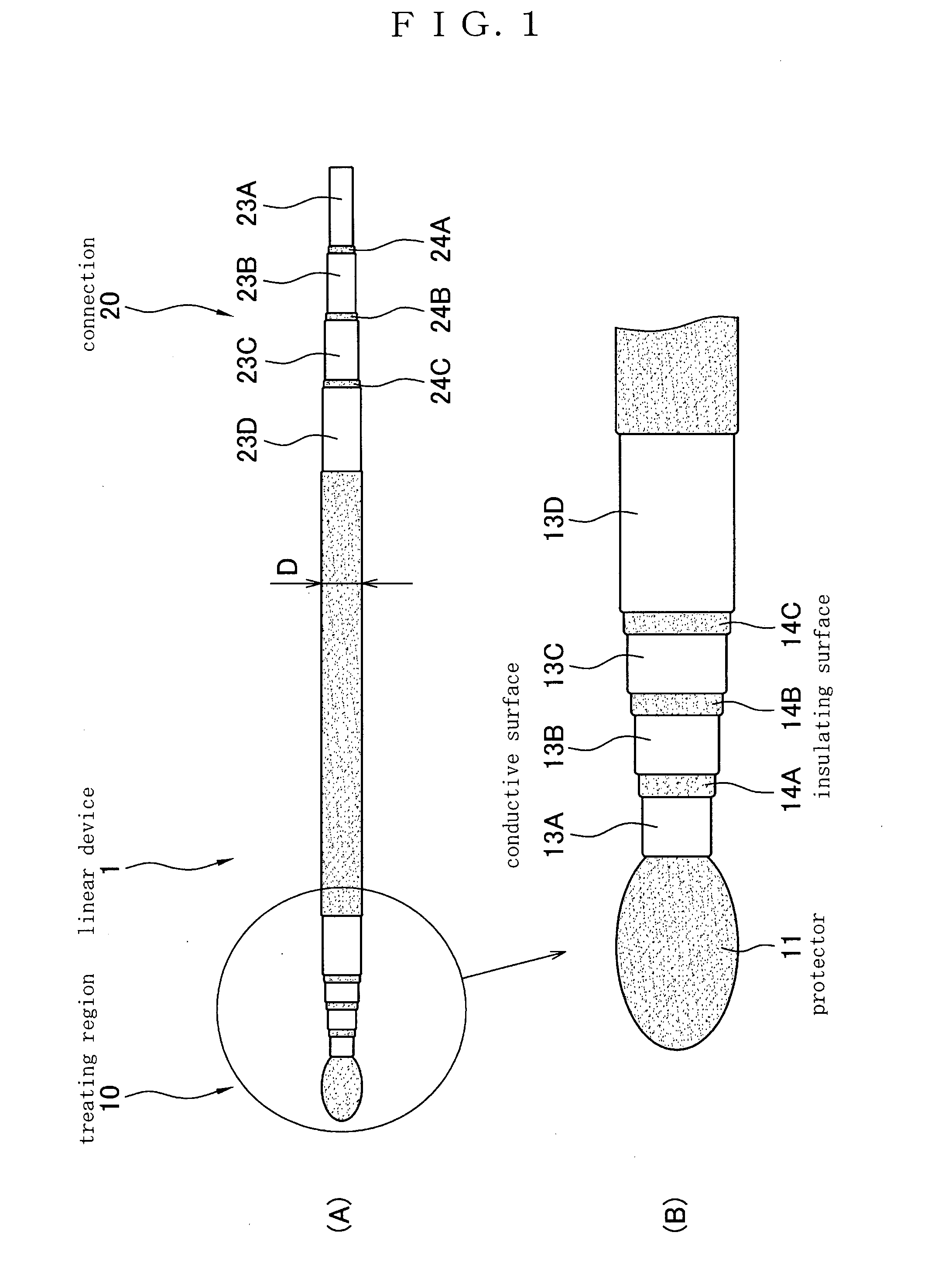Linear device
a linear device and electrode technology, applied in the field of linear devices, can solve the problems of reducing the strength of the glucose sensor, affecting the treatment effect, so as to prevent damage, reduce the damage to the subject and the linear device, and prevent damag
- Summary
- Abstract
- Description
- Claims
- Application Information
AI Technical Summary
Benefits of technology
Problems solved by technology
Method used
Image
Examples
Embodiment Construction
[0045] A preferred embodiment of the present invention will be described below by referring to the drawings.
[0046]FIG. 1 is a schematic illustration of a linear device 1 with a treating region 10 in accordance with the present invention. FIG. 1 (A) is a side view of the linear device 1; FIG. 1 (B), an enlarged view of the treating region 10. FIG. 2 (A) is a side view of a linear device 1A without a treating region 10; FIG. 2 (B), an end view taken along the arrowed line B-B of FIG. 2 (A). As shown in FIGS. 1 and 2, the linear device 1 is a linear member comprising a plurality of layers of an insulating material and a plurality of layers of a conductive material.
[0047] As shown in FIG. 2 (B), the linear device 1 further comprises a rod-like member 2 (hereinafter referred to as “axial core”). The axial core 2 is of a conducting material and has a circular cross section.
[0048] A plurality of thin layers are formed on the axial core 2. The layers are insulating layers 4A-D of an insu...
PUM
| Property | Measurement | Unit |
|---|---|---|
| width | aaaaa | aaaaa |
| diameter | aaaaa | aaaaa |
| diameter | aaaaa | aaaaa |
Abstract
Description
Claims
Application Information
 Login to View More
Login to View More - R&D
- Intellectual Property
- Life Sciences
- Materials
- Tech Scout
- Unparalleled Data Quality
- Higher Quality Content
- 60% Fewer Hallucinations
Browse by: Latest US Patents, China's latest patents, Technical Efficacy Thesaurus, Application Domain, Technology Topic, Popular Technical Reports.
© 2025 PatSnap. All rights reserved.Legal|Privacy policy|Modern Slavery Act Transparency Statement|Sitemap|About US| Contact US: help@patsnap.com



